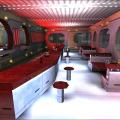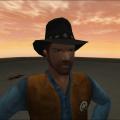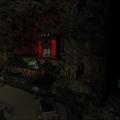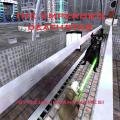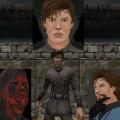-
Posts
103 -
Joined
-
Last visited
Content Type
News Articles
Tutorials
Forums
Downloads
Everything posted by BruceJohnJenner
-
Ive been thinking of trying out some of the heavily modified source forks of OpenJK that add on more features to the original base game. I dont mind breaks in compatibility with the original game, just interested in seeing how far the engine could be modded for new features. I heard rumours that there were forks out there that had added on things like grappling hooks and new fp/moves to the game, but Im not sure which fork has that and is most stable/well developed for features. Whats the best fork of OpenJK for spicing up single player?
-
It is the Ord Mantell map, but it looks totally different than I remember it in the base game. Not a huge fan of the new theme, its too bright, and the image draws too much visual attention away from the UI. I like the idea of a new theme, but I would much prefer if the image used was looking up into a starfield like the old one. That was part of what made it great for me...
-

Is it possible to run OpenJK in 320x240?
BruceJohnJenner replied to BruceJohnJenner's topic in OpenJK
Well, I cant believe it, but it almost works: I converted the existing system with OpenJK running properly to the Pitft touchscreen, but the OpenGL support does not work quite right (verified by glxgears and this). The menu and the game overall are super laggy, probably something like 2-3 fps at best, but I was able to load mp/ffa5 and run around a bit. As mentioned, the game runs super slow, but its just fast enough that I can navigate through the map and explore somewhat. You can see in the final screenshot that the skybox doesnt render at all, instead we just see what we get when we look into the void. (ie out of a visually leaked wall in the map) Most of the settings are as low as they will go, but I was wondering if theres any way to squeeze just a few more fps up to 10 to make this barely playable? -
I followed most of the build instructions that @@capturesteve originally laid out here: https://jkhub.org/topic/5549-running-dedicated-server-on-raspberry-pi/ sudo apt-get install libjpeg8-dev libpng12-dev zlib1g-dev freeglut3-dev cmake git make vim ## install the software packages that we need to build and run OpenJK sudo apt-get install libsdl2-dev ## this might not be 100 % necessary, I think the latest raspbian with ## jessie now includes SDL2 by default cd ~ mkdir dev ## go to home directory and make a development folder to store source in ## change this if you have a different preferred development folder cd dev git clone https://github.com/JACoders/OpenJK.git cd OpenJK ## clone the source and go to the new directory mkdir build cd build cmake .. -DCMAKE_INSTALL_PREFIX=~/jka/ ## shorter directory path to make it easier to navigate to the ## game in terminal make -j4 ## this will pretty much lock everything up for a while using all ## four cores on the Pi 2, but build takes long enough as it is ## compilation on the Pi B+ took absolutely forever make install Next we need to copy the bare minimum pk3 files over to the pi via usb stick. I dont particularly recommend ftp for this unless you have a ton of time on your hands. cp /memory_stick/assets*.pk3 ~/jka/base ## can someone double check the path for ~/jka/base for me ## I think this should be the right path to the base directory ## where the pk3s need to be stored ## if not, just put them in the base folder 1 below wherever ## make spits out the openjk_sp.arm executable Now we need to enable the full OpenGL support now available on the Pi 2 (and only on the Pi 2). Up until recently the Raspberry Pi had OpenGL ES support, a limited subset of OpenGL that isnt good enough to run OpenJK. The latest Raspbian Jessie has a super buggy OpenGL driver which we can use however. sudo apt-get install xcompmgr libgl1-mesa-dri ## OpenGL support needs some additional software cd /boot sudo vim config.txt ## we need to modify the boot config to avoid an odd issue with the ## GL driver. Editing the config.txt, we need to add a line ## avoid_warnings=2 wherever you like. Save and close the file sudo raspi-config In raspi-config, select Advanced Options, and enable OpenGL support. Reboot when prompted to make the changes take effect. Once the system comes back up, open your terminal, cd to the directory where the build is and run cd ~/jka/ ./openjk_sp.arm ## cross fingers and may the force be with you Hopefully I didnt miss anything important. Please post any issues with this guide here and I will try to fix them.
-
Just thought I would post this, I finally got OpenJK running on the Raspberry Pi 2 with the new experimental OpenGL driver, and I check youtube and aww dammit, somebody beat me to this by two weeks . Well at least I can confirm that it runs on the Pi as well. Im gonna give converting the system over to the PiTFT screen a try, but for the moment it at least works more or less on the HDMI output. Overall performance wasnt too bad, although model and textures are best on low setting, or sometimes the game will crash when loading a large map like kor2. The entrance to Ragnos Tomb in kor2 seems to have some issues with the base flickering through when looking from across the valley, but that might just be an issue with the low model detail setting.
-

Is it possible to run OpenJK in 320x240?
BruceJohnJenner replied to BruceJohnJenner's topic in OpenJK
The resolution itself isnt the problem, when I run it without those commands the program correctly detects that it needs to run in 320x240 resolution (I can see it in the console output). The real issue is that the Raspberry Pi only really has proper support for OpenGL ES (a reduced version of OpenGL for embedded systems). OpenJK does not yet have an OpenGL ES renderer, although it is possible to create one, it probably wont happen any time soon. The most recent version of Raspbian can apparently use full OpenGL on the Raspberry Pi 2, but the driver is said to be very buggy and unstable, and it doesnt work on my system at any rate. -

Is it possible to run OpenJK in 320x240?
BruceJohnJenner replied to BruceJohnJenner's topic in OpenJK
Thats odd. So what is that library that cmake is referencing? -

Is it possible to run OpenJK in 320x240?
BruceJohnJenner replied to BruceJohnJenner's topic in OpenJK
I did the whole thing all over again from scratch on the Pi 2, unfortunately it looks like the drivers for the new (experimental) OpenGL support might conflict with the device tree that adafruit installs to make the PiTFT screen work. Im not 100% sure on that, but I doubt I'll be able to make it work with this screen. As far as I can tell, OpenJK is looking at the library for OpenGL ES (/usr/lib/arm-linux-gnueabihf/libGL.so) and thinking that its a full OpenGL when its not, hence the crashes. On the bright side, I can confirm that openjkded server does run properly on the Raspberry Pi 2. I connected the Pi to a router, connected a desktop to the network, scanned for the Pis IP, then connected using connect [iP], and mp/ffa1 worked flawlessly. @@capturesteve, maybe give the repo another pull, and try again? I did a bit more digging and realized that the Quake3 port they have running (https://github.com/raspberrypi/quake3) was specifically ported for the RaspberryPi (I think they set a bounty for it a few years ago), and it almost undoubtedly uses OpenGL ES (presumably with some features ripped out of the renderer to accommodate this). @@mrwonko, I know writing that ES renderer isnt a top priority, but if you can ever get it done, I would really be excited for the chance to get this running. -
-
So after playing JKA single player through for the bazillionth time, I was thinking of finally checking out multiplayer for once. I know a bit about how the server itself works, as well as how to connect both from the menu and the console (/connect [ip address] which will try to connect through port 29070 on the ip given), but I dont know of any servers to connect to. Do most people just set up a home server running Jedi Academy, and them distribute the ip address? Is there a server out there that many people on JKHub like to frequent? I was thinking of giving siege or CTF a whirl first if I can.
-
Out of curiosity, has anyone ever made a list of the relative duel success ratios between single, staff, and duel?
-

Is it possible to run OpenJK in 320x240?
BruceJohnJenner replied to BruceJohnJenner's topic in OpenJK
Gave that a try, it did seem to choose the correct resolution this time, but it still crashes. I think it might be an issue with the openGL extensions, tty] OpenJK: v1.0.1.1 linux-arm Mar 21 2016 tty] Initialising zone memory ..... tty] ----- FS_Startup ----- tty] Current search path: tty] /home/pi/.local/share/openjk/base tty] ./base/assets3.pk3 (16 files) tty] ./base/assets2.pk3 (62 files) tty] ./base/assets1.pk3 (8320 files) tty] ./base/assets0.pk3 (15346 files) tty] ./base tty] tty] ---------------------- tty] 23744 files in pk3 files tty] execing default.cfg tty] execing openjk_sp.cfg tty] couldn't exec autoexec_sp.cfg tty] Running Jedi Academy Mode tty] ----- Client Initialization ----- tty] ----- Initializing Renderer ---- tty] Trying to load "rdsp-vanilla_arm.so" from "."... tty] ------------------------------- tty] ----- Client Initialization Complete ----- tty] --- Common Initialization Complete --- tty] SDL using driver "RPI" tty] Initializing display tty] Display aspect: 1.333 tty] ...setting mode 0: 320 240 tty] Using 24 color bits, 24 depth, 8 stencil display. tty] Available modes: '320x240' tty] Initializing OpenGL extensions tty] I just checked that, yeah, I think you're right. I ran raspi-config and tried to initialize OpenGL, but the dialogue told me it was only available on the pi2 (and up now ). I guess the native Quake III port that comes with RetroPie must rely on OpenGL ES that the Pi was originally equipped with. Next step, I guess I'll have to retrieve my Pi2 from home and work through the whole damn process again. The thing that was odd though (and might be worth a look for you) cmake did not see any issue with finding OpenGL, I saved the output of cmake .. to a text file: -- The C compiler identification is GNU 4.9.2 -- The CXX compiler identification is GNU 4.9.2 -- Check for working C compiler: /usr/bin/cc -- Check for working C compiler: /usr/bin/cc -- works -- Detecting C compiler ABI info -- Detecting C compiler ABI info - done -- Check for working CXX compiler: /usr/bin/c++ -- Check for working CXX compiler: /usr/bin/c++ -- works -- Detecting CXX compiler ABI info -- Detecting CXX compiler ABI info - done -- Looking for sys/types.h -- Looking for sys/types.h - found -- Looking for stdint.h -- Looking for stdint.h - found -- Looking for stddef.h -- Looking for stddef.h - found -- Check size of void* -- Check size of void* - done -- Found JPEG: /usr/lib/arm-linux-gnueabihf/libjpeg.so -- Found ZLIB: /usr/lib/arm-linux-gnueabihf/libz.so (found version "1.2.8") -- Found PNG: /usr/lib/arm-linux-gnueabihf/libpng.so (found version "1.2.50") -- Looking for XOpenDisplay in /usr/lib/arm-linux-gnueabihf/libX11.so;/usr/lib/arm-linux-gnueabihf/libXext.so -- Looking for XOpenDisplay in /usr/lib/arm-linux-gnueabihf/libX11.so;/usr/lib/arm-linux-gnueabihf/libXext.so - found -- Looking for gethostbyname -- Looking for gethostbyname - found -- Looking for connect -- Looking for connect - found -- Looking for remove -- Looking for remove - found -- Looking for shmat -- Looking for shmat - found -- Looking for IceConnectionNumber in ICE -- Looking for IceConnectionNumber in ICE - found -- Found X11: /usr/lib/arm-linux-gnueabihf/libX11.so -- Found OpenGL: /usr/lib/arm-linux-gnueabihf/libGL.so -- Looking for include file pthread.h -- Looking for include file pthread.h - found -- Looking for pthread_create -- Looking for pthread_create - not found -- Looking for pthread_create in pthreads -- Looking for pthread_create in pthreads - not found -- Looking for pthread_create in pthread -- Looking for pthread_create in pthread - found -- Found Threads: TRUE -- Found SDL2: /usr/lib/arm-linux-gnueabihf/libSDL2main.a;/usr/lib/arm-linux-gnueabihf/libSDL2.so;-lpthread -- Configuring done -- Generating done -- Build files have been written to: /home/pi/dev/OpenJK/buildcheck Which seemed really weird that apt wouldn't allow me to install dependencies like libjpeg8-dev, but cmake thinks everything is A-OK for compilation? -

Is it possible to run OpenJK in 320x240?
BruceJohnJenner replied to BruceJohnJenner's topic in OpenJK
I was hoping I could get this working on my own as a surprise, but that probably isn't going to happen now The platform is a raspberry pi B+ with a 320x240 touchscreen from adafruit called a Pitft The Pitft normally would be useless for this, as it doesnt normally have access to the GPU, but I followed the instructions here https://learn.adafruit.com/running-opengl-based-games-and-emulators-on-adafruit-pitft-displays/overview which basically trick the HDMI output into displaying on the Pitft. I dont know much about the specifics of how it works, but it does work with RetroPie (a RaspberryPi gaming distro) for running Quake III Arena, which you can see above. I did the basic setup described in the guide, and got everything working, then cloned OpenJK. I originally tried to follow the install steps that @@capturesteve used here , but libjpeg8-dev couldnt install because of dependency issues. I figured the project was done at that point, but when I ran cmake, it appeared to find all of the dependencies that it needed (including libjpeg oddly...) I ran make -j2 , then make install, which took the better part of a day to compile. I tried running it off of the command line first, which failed, not too surprising since I figure OpenJK requires SDL, which in turn needs to talk to something like the X server to create/manage windows audio, whatever. I then tried to run it from the RetroPie EmulationStation, and I get this before it segfaults, tty] OpenJK: v1.0.1.1 linux-arm Mar 21 2016 tty] Initialising zone memory ..... tty] ----- FS_Startup ----- tty] Current search path: tty] /home/pi/.local/share/openjk/base tty] ./base/assets3.pk3 (16 files) tty] ./base/assets2.pk3 (62 files) tty] ./base/assets1.pk3 (8320 files) tty] ./base/assets0.pk3 (15346 files) tty] ./base tty] tty] ---------------------- tty] 23744 files in pk3 files tty] execing default.cfg tty] execing openjk_sp.cfg tty] couldn't exec autoexec_sp.cfg tty] Running Jedi Academy Mode tty] ----- Client Initialization ----- tty] ----- Initializing Renderer ---- tty] Trying to load "rdsp-vanilla_arm.so" from "."... tty] ------------------------------- tty] ----- Client Initialization Complete ----- tty] --- Common Initialization Complete --- tty] SDL using driver "RPI" tty] Initializing display tty] Display aspect: 1.333 tty] ...setting mode 4: 800 600 tty] Using 24 color bits, 24 depth, 8 stencil display. tty] Available modes: '320x240' tty] Initializing OpenGL extensions tty] The last part when it segfaults doesnt get caught by my log file for some reason, so I took a screenshot of what happens: -

Is it possible to run OpenJK in 320x240?
BruceJohnJenner replied to BruceJohnJenner's topic in OpenJK
Got it to build, but its segfaulting on launch. I'll post more info tommorow -

Is it possible to run OpenJK in 320x240?
BruceJohnJenner replied to BruceJohnJenner's topic in OpenJK
Are those Cvars or command line arguments? -
Hey, so Im currently working on a project to get OpenJK running on a device with a small screen. It appears that the smallest window resolution that is supported is 640x480, but the screen I am planning on using is only 320x240. I am guessing that I might need to turn off the Hud at a resolution that small, but I am not entirely sure if I need to modify anything in the source as well?
-

Scripting movement and actions
BruceJohnJenner replied to BruceJohnJenner's topic in Jedi Knight General Discussions
Rough outline of what I was able to produce if anyones interested +movedown wait 20.0 +attack wait 20.0 +forward wait 120.0 -movedown wait 300.0 -forward wait 25.0 -attack It does exactly what I wanted, although if you accidentally hold down the key it is bound to, the script keeps getting executed forever for some reason. -

Scripting movement and actions
BruceJohnJenner replied to BruceJohnJenner's topic in Jedi Knight General Discussions
Thanks, I just knew it was going to be something glib like that Does the game input client itself use the +forward/-forward commands when listening to the states of the keys? Is there any better alternative to using the wait command? Im tempted to write a delay.cfg file to call but I dont know if its possible to pass arguments with an exec command? (ie exec delay 5 for a delay of 5 seconds...) My concern is that com_maxfps does deal with high framerates, but not low ones, dont know if theres any way of dealing with that. -
Hey, so I wasnt sure if scripting questions should go under modding assistance or, here, but here goes, Im working on a handful of small scripts to automate some of the clunkier special moves in Jedi Academy. For example if you have dual or staff saber, crouching, then coming up out of the crouch forwards and hitting attack does a sort of "scythe" move with the lightsaber(s), which for the saber staff is one of the most effective attacks in the game against other Jedi. On a keyboard/mouse at least, this is always really awkward and annoying to do. Anyways, I wanted to write a script that automated this, but I had a bit of trouble figuring out how to effectively emulate these keystrokes in a script. I checked the keybindings in the console with the bindlist command, and then wrote a script scythe.cfg with something like +forward in it and executed it. The player character simply walks forward constantly and wont stop. If I counter this with +back the player no longer walks forward, but pressing W or S no longer works for walking forward or backward, although I can shuffle left or right (I don’t know if the "walk forward" and "walk backward" commands simply are canceling each other out?) Is there some way to write a script that causes the player to walk forward for a certain delay time (using wait for this, although its not a good option) then stop? Sort of like, +forward wait 300 +stop
-

Which Jedi Knight mission was the hardest?
BruceJohnJenner replied to Fuse294's topic in Jedi Knight General Discussions
Im surprised noone has mentioned the Falling Ship level from Dark Forces II, the one where you not only have to find the Moldy Crow, you have to find the controls to extend the platform to reach it, and get back to the ship while on the clock (what is it, 2-5 minutes depending on what your difficulty setting is?). Oh, and yeah, gravity will be changing continuously throughout the level, which makes navigating almost impossible. I loved the Cairn stealth level though. Jedi Academy would have been so much better if Taspir and/or Korriban were done similar to that. -

Which boss battle from the Jedi Knight series was your favorite?
BruceJohnJenner replied to eezstreet's topic in Latest Poll
Maybe its just me, but I kinda liked Tavion part 1 on Bespin. The map for that duel made for some interesting strategies. I think I ended up defeating her by force pushing her back into the freighter at the end or something like that. -
- 6 comments
-
- Star Wars Related
- Contains maps
-
(and 2 more)
Tagged with:
-
- 6 comments
-
- JK2
- Team Support
-
(and 4 more)
Tagged with:



